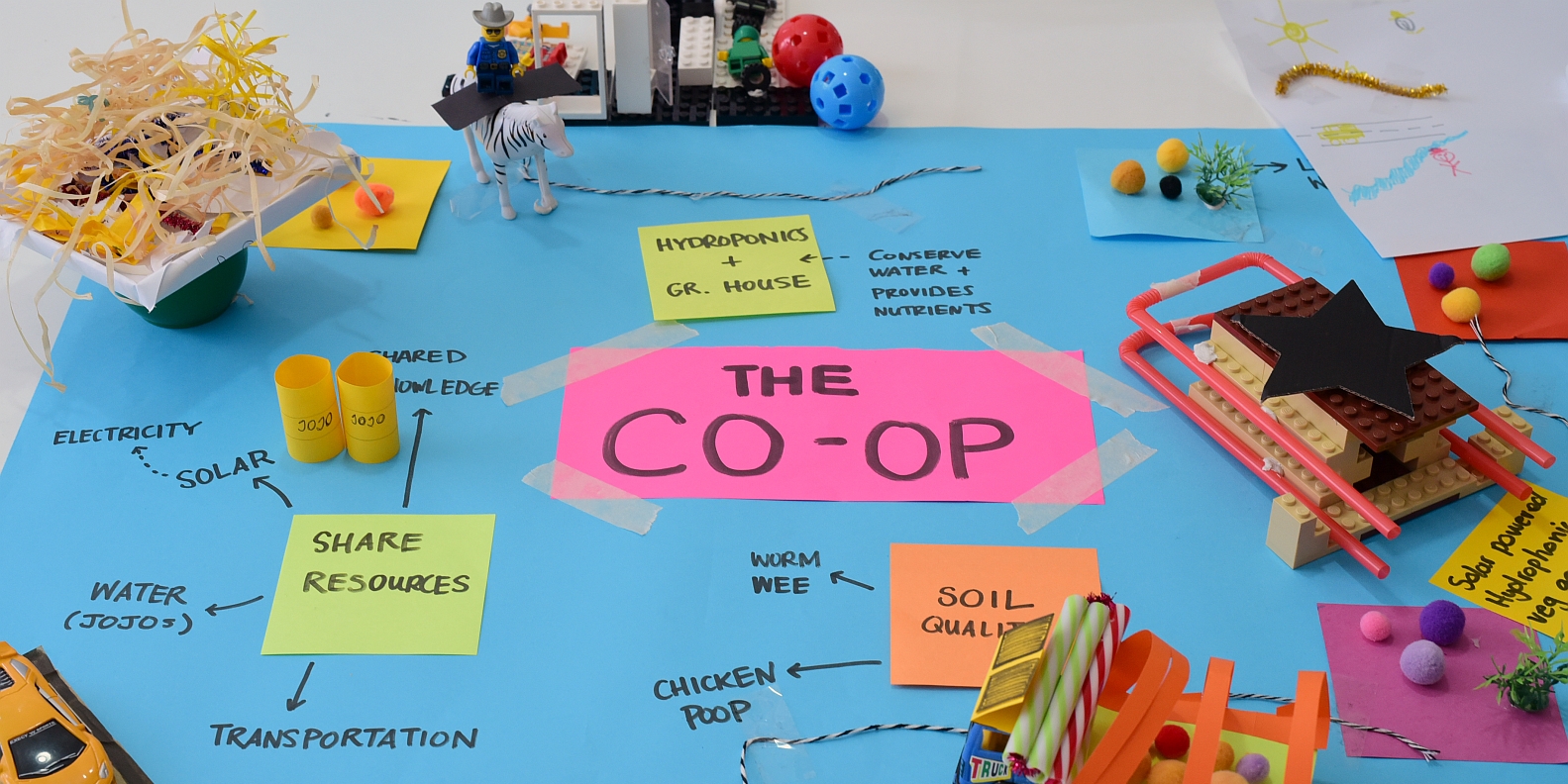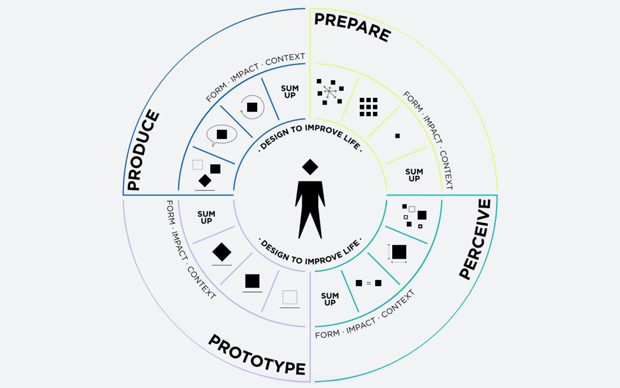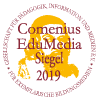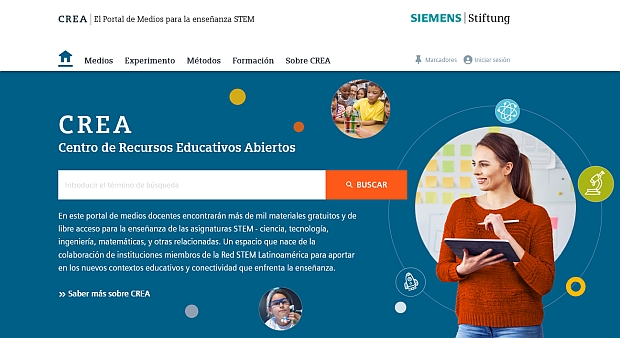
Design Thinking in STEM lessons
Design Thinking as a creative approach
Design Thinking is a creative method for making complex problems tangible and developing appropriate solutions in a series of iterative steps. This helps students approach a task from the users’ perspective. In group work, the students define the users’ needs and come up with ideas for solving the problem. They evaluate the ideas using self-designed prototypes and start the process again in order to find a satisfactory solution. The method encourages curiosity, dedication, and empathy as well as the abilities to innovate and to think independently and critically. These skills play a key role, especially in STEM subjects. The teacher moderates the groups and guides them through the Design Thinking process.
Method Media Real-life examples SourcesDesign is the human capacity to shape our environment in ways that serve our needs and give meaning to our lives.
John Heskett
John Heskett, a British professor of design, was convinced that creative potential lies within each person. The Design Thinking method nurtures creative confidence and brings together our innovative power and our everyday world and society.
The methodological background
Design unites the form, function, and impact of products and solutions with the users’ desires and needs. Interdisciplinary teams consider the individual user and channel their creativity toward the user group’s requirements.
This approach is also used in Design Thinking in a school context. The appeal is to “Make the user’s perspective your concern!” In the first step, the students should understand the task and imagine themselves in the situation of the user group. They should recognize the users’ needs and identify with them. This first important phase must be completed before the groups develop solutions using so-called prototypes. The students enter a creative production process and design the initial proposals using materials they select themselves. This can be implemented in the form of sketches, models, role-playing, and much more. The early development and presentation of initial prototypes allow the students to quickly compare them with the task. The teams promptly recognize whether any improvements are necessary and implement them immediately as they refine the prototypes. Through this process, the groups gradually come closer to a user-oriented solution.
Teamwork – ideally in interdisciplinary groups – is an essential component in the Design Thinking process. It’s believed that incorporating a variety of perspectives and areas of expertise in developing an innovation is helpful to teamwork. The collective brainstorming generates creative ideas that can be harnessed for problem-solving.
At the same time, many of our global challenges are often inaccessible and overwhelming for individuals. Take climate change, for example, or the topic of sustainability, both of which also play a key role in STEM lessons. Current movements like Fridays for Future show the potential of sharing thoughts, jointly refining ideas, concentrating on needs: Every individual, the diversity of arguments, and creative approaches are all important. The group can then work out solutions aimed at one goal. It’s important to remember that there’s no right or wrong: Every idea counts and is treated equally.
Fostering and applying skills in STEM lessons
Linking STEM education with the Design Thinking process fosters the four of the skills and abilities in the 21st century skills that today are considered key competencies for students:
- Creativity – the ability to develop new solutions to complex challenges
- Critical thinking – the ability to scrutinize sources and independently examine input
- Cooperation – the ability to work in a team and to trust others
- Communication – the ability to convey one’s own thinking, learning, and working
The United Nations’ 17 Sustainable Development Goals (SDGs) can be ideally linked with the creative Design Thinking approach in STEM lessons. Formulated to support the sustainable development of our society, they provide the thematic structure for interdisciplinary STEM lessons: They include the economic, social, and environmental challenges of the 21st century, which are growing in their local impact along with their global relevance. Complex problems like clean drinking water or sustainable power generation can be made more approachable with Design Thinking.
The Index Project
Siemens Stiftung is partnering with The Index Project – a nonprofit organization with a focus on design for sustainable solutions – to implement and prove the Design Thinking method in STEM lessons.
“Our work focuses on high-quality STEM lessons as an essential educational foundation. The integration of a creative component can boost students’ motivation to grapple with current scientific and technical issues and to play an active part themselves. In addition, we’d especially like to nurture the human capacity to pursue creative and visionary thinking. Students should have the experience of contributing ideas and jointly developing solutions to complex challenges and so participating in helping shape our society in a positive and sustainable manner. In our search for a partner to help us develop and refine this gateway to the students, we discovered the Danish institution The Index Project,” said Christine Niewöhner, Project Manager at Siemens Stiftung.
Design Thinking in the classroom
With its “Design to Improve Life Education” program, The Index Project is banking on a holistic, creative educational concept that aims to effectively link society’s demand for certain abilities with the individual’s learning needs. As part of this concept, the institution has developed key questions and various tools that keep the teams on course during the creative process in the classroom:
- The “Design to Improve Life” compass, and the closely related
- “Design to Improve Life” parameters.
The compass
The compass guides teachers and students step by step through four different Design Thinking phases with specific exercises, methods, and techniques. It provides pedagogical/didactic support in the process and helps the class extensively understand, work through, and remain focused on a problem or a challenge. It encourages curiosity, engagement, creativity, and innovative thinking. The individual process phases are described in more detail below.

Each (partial) result is considered and evaluated in terms of form, impact, and context. These parameters support the teams during reflection: Is the form of the result practical and feasible? Is the impact relevant to the original target group and economically, environmentally, and socially sustainable? Did the group adhere to the geographical and cultural context of the task?
Iteration is a key element of the process: The groups continuously evaluate what they’ve learned, noticed, and developed. If the evaluations show that the solution isn’t yet satisfactory, everyone goes one step back and improves the solution. Failures are explicitly desired because they set the teams on the right track little by little. The groups don’t move onto the next round until the result is appropriate.
Process phases in detail
About the authors

Charlotte Høeg Andersen is responsible for the educational program at The Index Project. She has worked in the design industry for over 15 years managing design processes and developing design strategies for companies, project organizations, and public agencies. She’s passionate about Design Thinking and has many years of experience with leading people through design and innovation processes. For many years, Charlotte Høeg Andersen has collaborated with schools and local educational institutions in Denmark to integrate innovative design methods into curricula as a fixed component. The Index Project is a Danish nonprofit organization dedicated to design for sustainable solutions worldwide.
The Index Project

Christine Niewöhner is responsible for the area “STEM & Creativity” at Siemens Stiftung and heads the “Design Thinking in STEM” project, which links scientific education with creative processes and nurtures young people holistically. She’s convinced that creativity is essential both for personal development and for meeting future challenges. The project is currently being implemented in schools in South Africa and Chile and is being continued in other African and Latin American countries as well as in Germany.
Media for using the method
The teacher’s guide developed by The Index Project introduces the Design Thinking methodology and the “Design to Improve Life” concept. It provides teachers with a didactic foundation and details the creative process in the individual design phases. Numerous concrete exercises and techniques enable teachers to immediately apply the method on a modular basis in their classrooms. The teacher’s guide can also function as a teacher’s log for writing reflections, experiences, and ideas and for documenting the projects’ progress and the students’ learning experiences.
Teacher’s Guide
Real-life example
Video: “Design Thinking in STEM – Impressions of a Teachers Workshop”
The pilot project to implement Design Thinking in STEM subjects was launched in 2019 in South Africa with teachers from Africa, Latin America, and Germany. The video captures their impressions and experiences.
Real-life example
Video: “Design Thinking in STEM – Pursuing the Sustainable Development Goals”
The kick-off workshop for Design Thinking in Chile in December 2019 focused on the use of the method in connection with sustainability themes. Teachers and multipliers report on whether and how this is achieved in the video.
References and background information on Design Thinking
References from the text
The Index Project
https://theindexproject.org/
21st Century Skills
https://unevoc.unesco.org/home/TVETipedia+Glossary/lang=en/show=term/term=21st+century+skills
The United Nations’ 17 Sustainable Development Goals (SDGs)
https://sdg-portal.de/
Heskett, J. (2005): Design – A Very Short Introduction. Oxford University Press, New York.
Available at: https://books.google.de/books?id=5hxqRkf4znkC [15.06.2020].
Project page for Design Thinking on the Siemens Stiftung website
https://www.siemens-stiftung.org/en/projects/design-thinking-in-stem/
Additional links
HPI School of Design Thinking "Thinking new, working differently"
This web site provides you with extensive insight into the history of the d.schools at Stanford University and the University of Potsdam as well as sample projects, background information, and materials.
David M. Kelley, professor at Stanford University and founder and chairman of IDEO, is regarded as the coiner of the name and one of the pioneers of the Design Thinking innovation method.


